Reheating pulled pork can be a tricky business. Whether it’s from a restaurant or a homemade batch, pulled pork is a versatile dish that can be enjoyed in many ways.
However, if not reheated properly, it can end up dry and flavorless. In this article, I will share my tips and tricks for reheating pulled pork so that it’s just as juicy and flavorful as it was the day before.
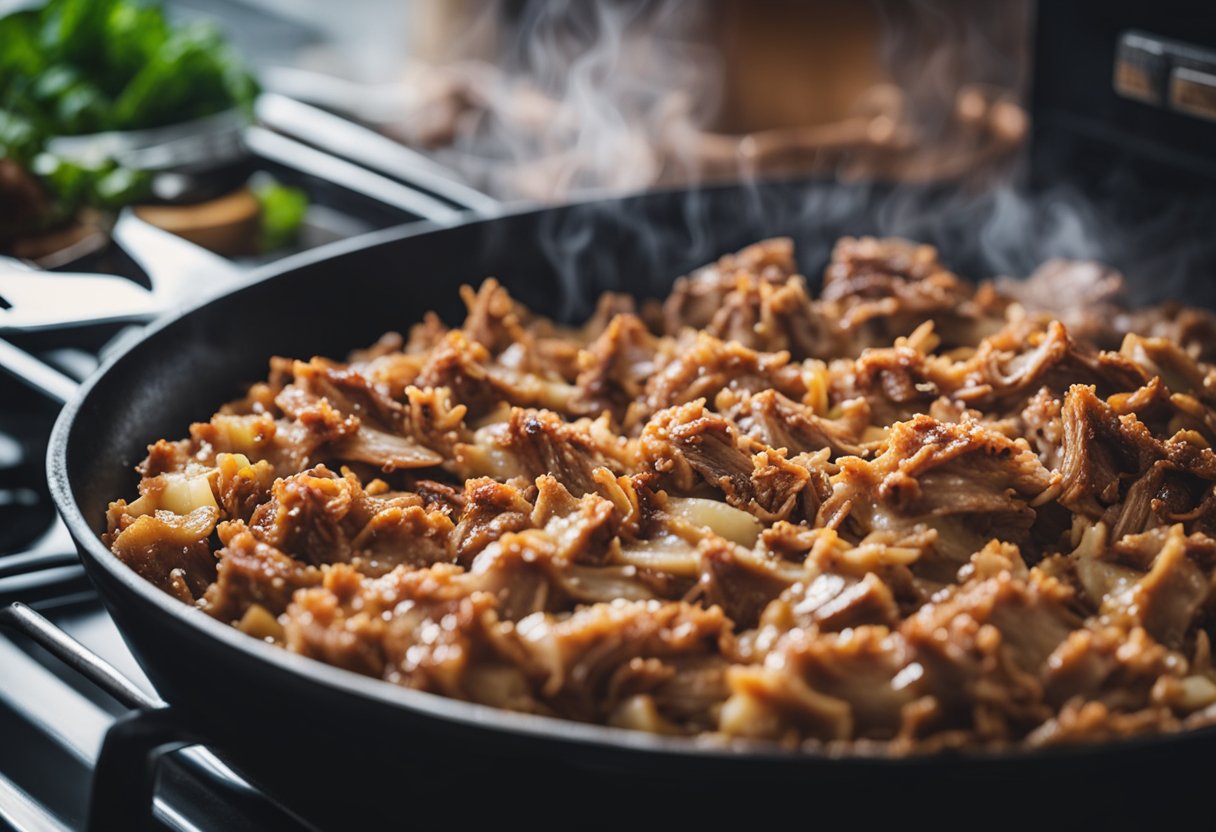
Before we dive into the reheating process, it’s important to understand the basics of pulled pork. Pulled pork is made by slow-cooking a pork shoulder until it’s tender enough to be shredded with a fork.
The cooking process can take several hours, and the result is a flavorful and tender meat that can be enjoyed in a variety of dishes.
When reheating pulled pork, it’s important to keep in mind that the meat has already been cooked once, and overcooking it can result in a dry and tough texture.
To ensure that your pulled pork is as delicious as it was the day before, it’s important to prepare it properly before reheating. If the pork has been refrigerated, take it out of the fridge and let it sit at room temperature for about 30 minutes before reheating.
This will help the meat cook more evenly and prevent it from drying out. Additionally, you may want to add a bit of moisture to the pork before reheating. This can be done by adding a bit of broth or water to the pork, or by covering it with a damp paper towel.
Key Takeaways
- Proper preparation is key to reheating pulled pork without drying it out.
- Knowing the basics of pulled pork can help you understand how to reheat it properly.
- Adding moisture to the pork before reheating can help maintain its juiciness and flavor.
Understanding the Basics of Pulled Pork
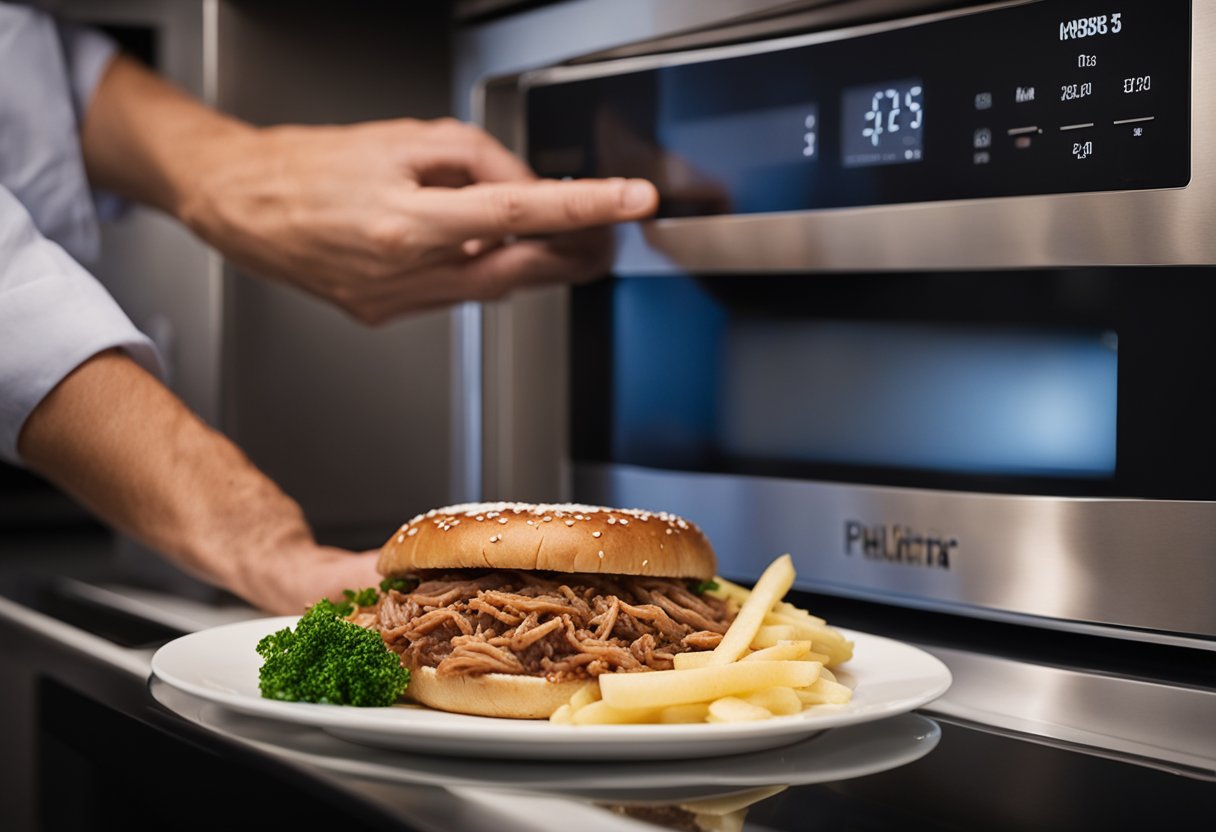
As a home cook, I often find myself with leftover pulled pork after cooking a large batch. Reheating pulled pork the next day can be a challenge, but with the right techniques, you can enjoy tender, juicy pulled pork once again.
Before we dive into the reheating process, let’s first understand the basics of pulled pork.
Meat Fibers and Texture
Pulled pork is traditionally made from pork butt or pork shoulder. These cuts of meat are tough and contain a lot of connective tissue.
When cooked low and slow, the connective tissue breaks down, making the meat tender and easy to pull apart. The texture of pulled pork should be moist, juicy, and slightly chewy.
Storage and Food Safety
Proper storage is key to ensuring that leftover pulled pork is safe to eat. When storing pulled pork in the refrigerator, it should be placed in an airtight container or wrapped tightly in plastic wrap.
It is important to consume refrigerated pulled pork within three to four days.
If you have a large batch of pulled pork that you won’t be able to consume within four days, consider freezing it. Pulled pork can be frozen for up to six months.
When freezing pulled pork, it is important to use a freezer-safe container or wrap it tightly in plastic wrap and aluminum foil.
Vacuum sealing is also an option, but be aware that some plastic containers and vacuum sealing bags contain bisphenol-A (BPA) and phthalates, which can be harmful to your health.
When reheating pulled pork, it is important to follow food safety guidelines. Pulled pork should be reheated to an internal temperature of 165°F to kill any bacteria that may have grown during storage.
Preparation for Reheating
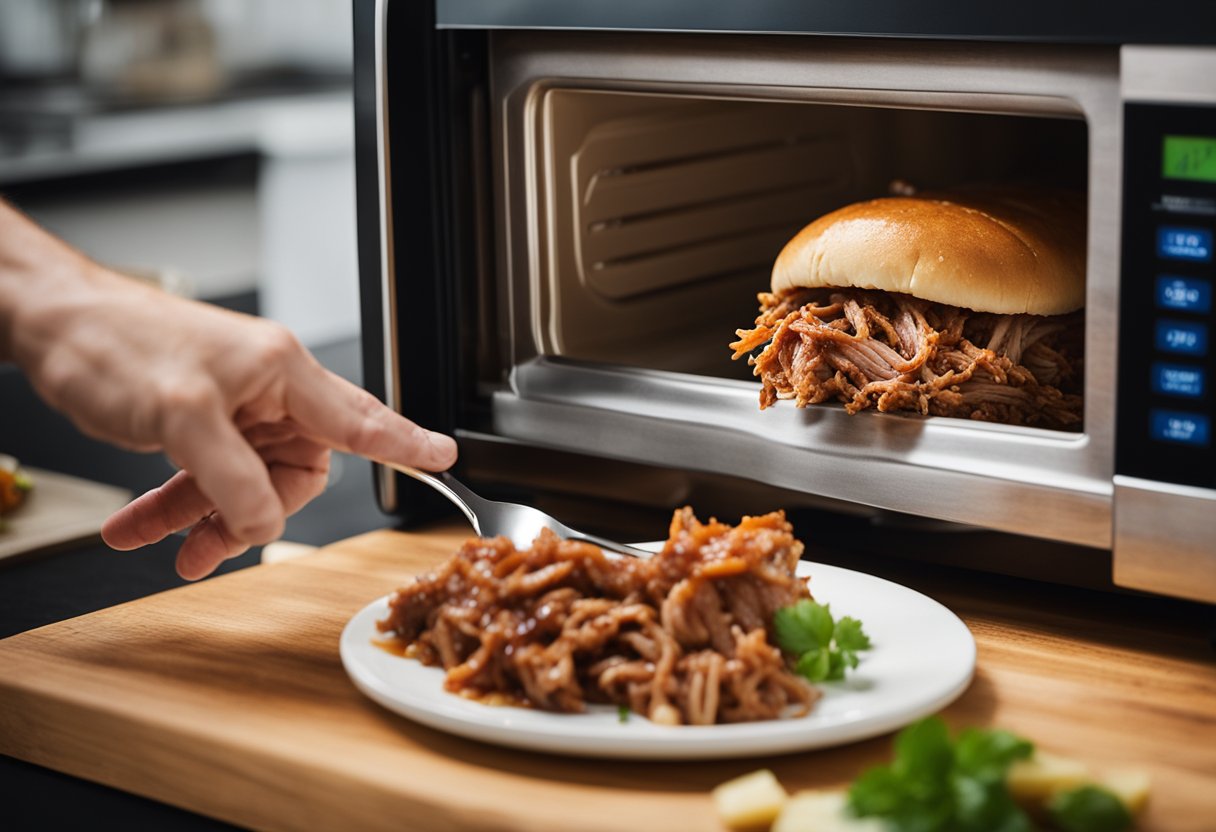
When it comes to reheating pulled pork, preparation is key. Proper preparation ensures that the reheated pork is safe to eat and retains its flavor and texture.
In this section, I will discuss two important aspects of preparation: thawing and defrosting and pre-reheat tips.
Thawing and Defrosting
If you have frozen pulled pork, you need to thaw it before reheating it. The best way to thaw pulled pork is to transfer it from the freezer to the fridge and let it thaw overnight.
This slow thawing process ensures that the pork thaws evenly and retains its moisture. Alternatively, you can thaw the pork in a water bath or use a microwave, but these methods can result in uneven thawing and loss of moisture.
If you’re short on time, you can use the defrost function on your microwave to thaw the pork quickly. However, be sure to follow the manufacturer’s instructions and use a microwave-safe container.
Never use hot water to defrost pulled pork, as this can result in uneven thawing and bacterial growth.
Pre-Reheat Tips
Before reheating pulled pork, there are a few things you can do to ensure that it retains its moisture and flavor.
Here are some pre-reheat tips:
- If the pulled pork is dry, add a little bit of apple juice or chicken broth to it. This will help it retain its moisture during reheating.
- Place the pulled pork in a foil-lined baking dish to prevent it from drying out and sticking to the pan. Cover the dish with foil to create a seal that will keep the moisture in.
- Preheat the oven to 250°F and place the pulled pork in the oven. Reheat until the pork reaches an internal temperature of 165°F. Use a meat thermometer to ensure that the pork is fully reheated.
- If you vacuum-sealed the pulled pork before freezing it, you can reheat it in the sous vide. Simply place the vacuum-sealed bag in a water bath and set the temperature to 165°F. Reheat until the pork reaches the desired temperature. Be sure to remove the pork from the bag before serving.
- If you have leftover pulled pork that you want to reheat, wrap it in a damp paper towel or dish towel. This will help it retain its moisture during reheating.
By following these tips, you can ensure that your reheated pulled pork is safe to eat and retains its moisture and flavor.
Reheating Methods
When it comes to reheating pulled pork, there are several methods you can use depending on your preferences and available equipment.
In this section, I’ll cover some of the most common ways to reheat pulled pork, including oven reheating, stovetop techniques, microwave use, sous vide reheating, and grill and smoker options.
Oven Reheating
Reheating pulled pork in the oven is a popular method because it can help maintain the texture and quality of the meat. To do this, preheat your oven to 225°F and place the pulled pork in an oven-safe dish.
Add some liquid, such as broth or drippings, to the dish to help keep the meat moist. Cover the dish with aluminum foil and heat it in the oven until the internal temperature of the pork reaches 165°F, which is a safe temperature for consumption.
You can also add some butter or other fat to the dish to add some extra moisture and flavor to the meat.
Stovetop Techniques
If you don’t have an oven or prefer to use the stovetop, you can also reheat pulled pork using a skillet or Dutch oven. Simply place the pulled pork in the skillet or Dutch oven and add some liquid, such as broth or water, to the pan.
Heat the pan on medium heat until the liquid starts to simmer, then reduce the heat to low and cover the pan. Let the pork simmer in the liquid for a few minutes until it’s heated through and reaches a safe temperature of 165°F.
Microwave Use
Using a microwave to reheat pulled pork is a quick and convenient method, but it can also dry out the meat if you’re not careful. To avoid this, place the pulled pork in a microwave-safe dish and add some liquid, such as broth or sauce, to the dish.
Cover the dish with a lid or plastic wrap and microwave it on high for 30-second intervals, stirring the meat between each interval. Check the internal temperature of the pork with a meat thermometer to make sure it has reached a safe temperature of 165°F.
Sous Vide Reheating
Sous vide is a method of cooking that involves sealing food in a plastic bag and cooking it in a water bath at a precise temperature for an extended period of time. It can also be used to reheat pulled pork, which can help maintain its juiciness and texture.
To do this, place the pulled pork in a sous vide bag and add some liquid, such as broth or sauce, to the bag. Seal the bag and heat it in a sous vide machine at 165°F for at least 45 minutes.
Grill and Smoker Options
If you’re a fan of BBQ and smoking, you can also reheat pulled pork on a grill or smoker. To do this, heat your grill or smoker to a low and slow temperature of around 225°F. Place the pulled pork in an aluminum foil pan and add some liquid, such as broth or sauce, to the pan.
Cover the pan with aluminum foil and place it on the grill or smoker. Let the pork heat through for a few hours until it reaches a safe temperature of 165°F. You can also add some wood chips to the grill or smoker to add some smoke and bark to the pork.
Maintaining Quality and Flavor
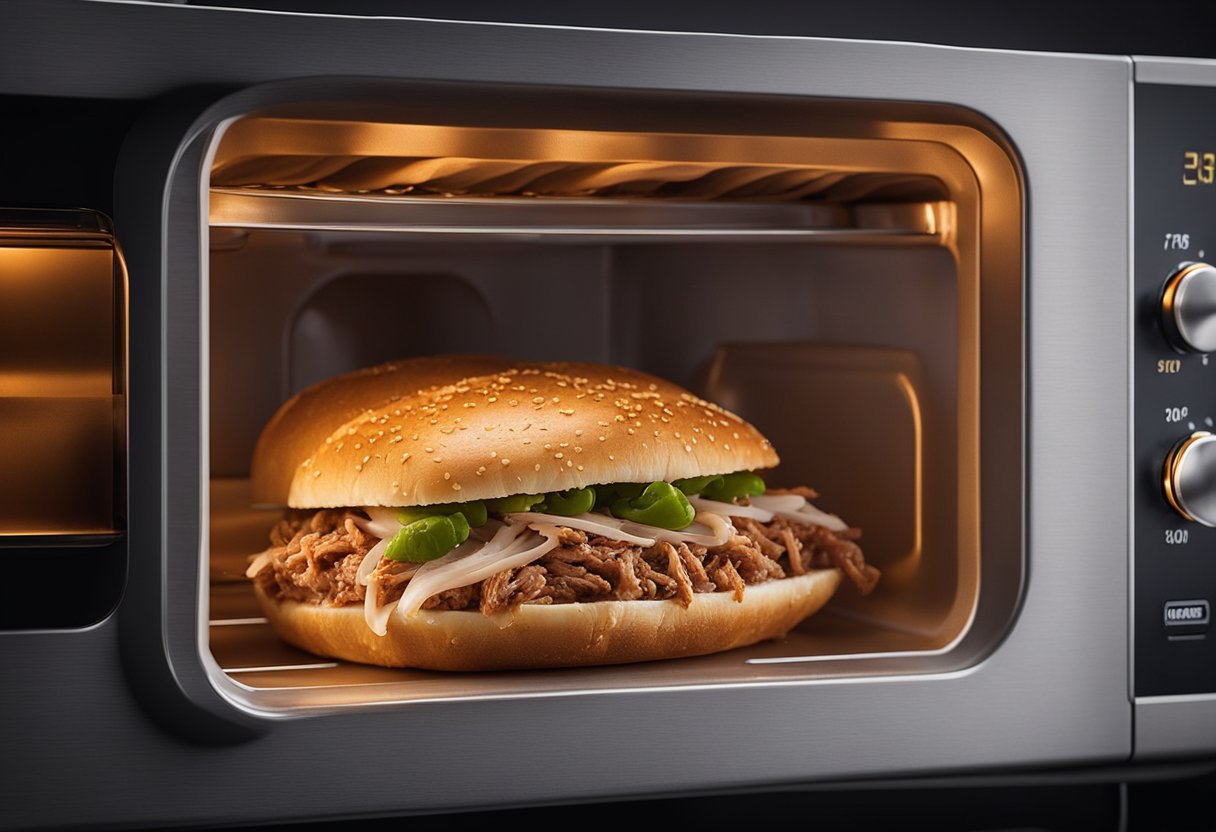
When reheating pulled pork, it is essential to ensure that the meat retains its quality and flavor. Here are some strategies that I use to maintain the delicious taste and texture of my pulled pork.
Moisture Retention Strategies
One of the biggest challenges when reheating pulled pork is retaining moisture. To prevent dryness, I recommend adding liquid to the meat before reheating.
You can use BBQ sauce, apple juice, or apple cider vinegar to add moisture and enhance the pork flavor.
Another way to retain moisture is to cover the pulled pork with foil or a lid while reheating. This will trap the steam and help to keep the pork moist.
However, if you prefer a crispy texture, you can remove the cover during the last few minutes of reheating to allow the top layer to crisp up.
Enhancing Taste Post-Reheat
To enhance the taste of your reheated pulled pork, you can add some BBQ sauce or seasoning to the meat after reheating. This will give the pork a fresh burst of flavor and make it taste like it was just cooked.
If you find that your reheated pulled pork has lost some of its flavor, you can try adding some fat to the meat.
This will help to restore the richness and depth of flavor that may have been lost during the reheating process. You can use bacon fat, butter, or any other type of fat that you prefer.
In conclusion, reheating pulled pork can be a tricky process, but with the right strategies, you can maintain the quality and flavor of the meat.
By adding moisture and enhancing the taste post-reheat, you can enjoy delicious and juicy pulled pork the next day.
Creative Uses for Leftover Pulled Pork
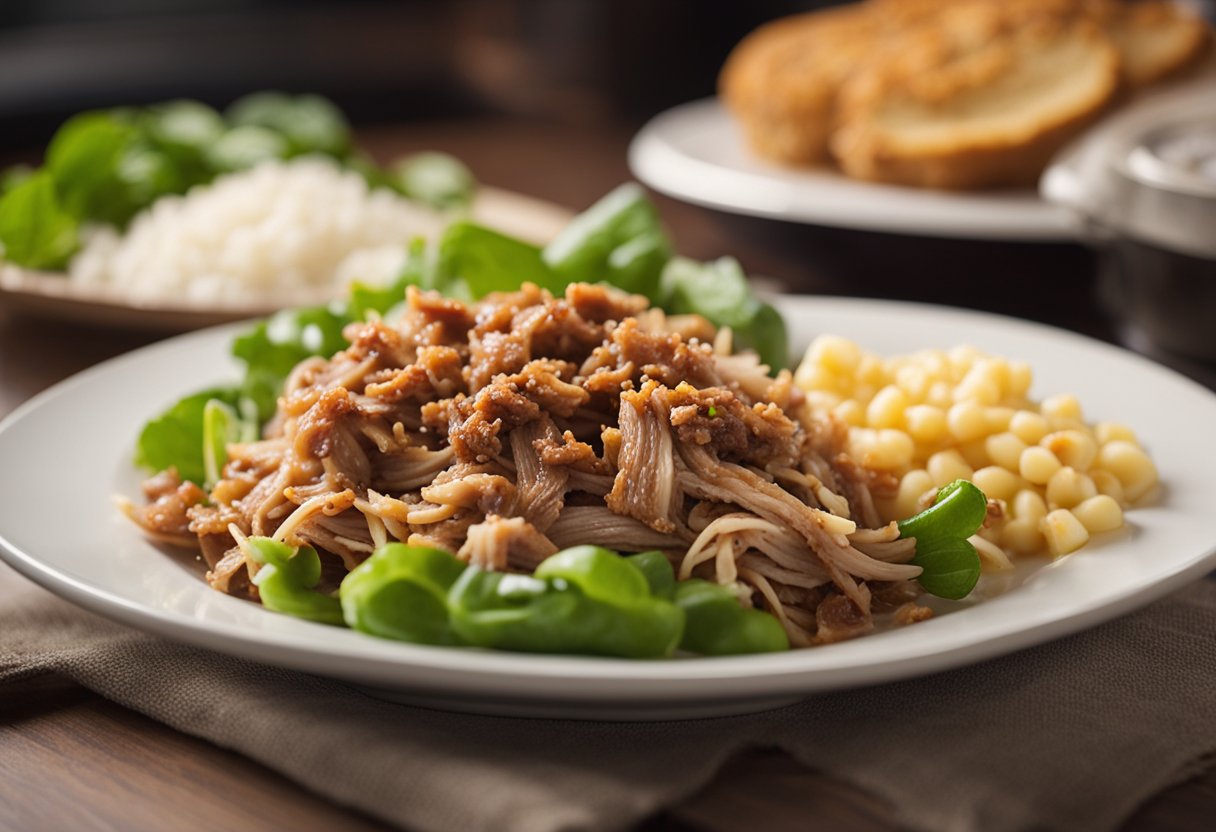
If you have some leftover pulled pork, don’t let it go to waste. There are many creative ways to use it up in innovative recipes and ideas.
Here are some of my favorite ways to use up leftover pulled pork:
Innovative Recipes and Ideas
Nachos
One of the easiest and most delicious ways to use up leftover pulled pork is to make nachos. Simply layer tortilla chips with shredded cheese, leftover pulled pork, and any other toppings you desire, such as diced tomatoes, jalapenos, and avocado.
Bake in the oven until the cheese is melted and bubbly, and serve with your favorite salsa and guacamole.
Soup
Another great way to use up leftover pulled pork is to make a hearty soup. Simply sauté some onions, garlic, and celery in a pot until soft, then add some chicken broth, diced potatoes, and any other vegetables you like, such as carrots and peas.
Add in the leftover pulled pork and let it simmer until the vegetables are tender and the flavors have melded together.
Crockpot
If you have a crockpot, you can use it to make a delicious pulled pork chili. Simply add some diced tomatoes, kidney beans, corn, and spices to the crockpot, along with the leftover pulled pork.
Let it cook on low for several hours until the flavors have melded together and the chili is thick and hearty.
Cooking Ahead
If you know you will have leftover pulled pork, you can cook it ahead of time and freeze it for later use. Simply vacuum pack the pulled pork and freeze it for up to three months.
Then, when you are ready to use it, simply thaw it out and reheat it using one of the methods outlined in our search results.
How many times can you reheat pulled pork?
It is generally safe to reheat pulled pork up to two times, as long as it has been stored properly in the refrigerator or freezer.
However, it is important to make sure that the pork is heated to an internal temperature of at least 165 degrees Fahrenheit to ensure that it is safe to eat.
In conclusion, there are many creative ways to use up leftover pulled pork. Whether you make nachos, soup, chili, or freeze it for later use, you can enjoy the delicious flavors of pulled pork in a variety of innovative and tasty ways.
Frequently Asked Questions
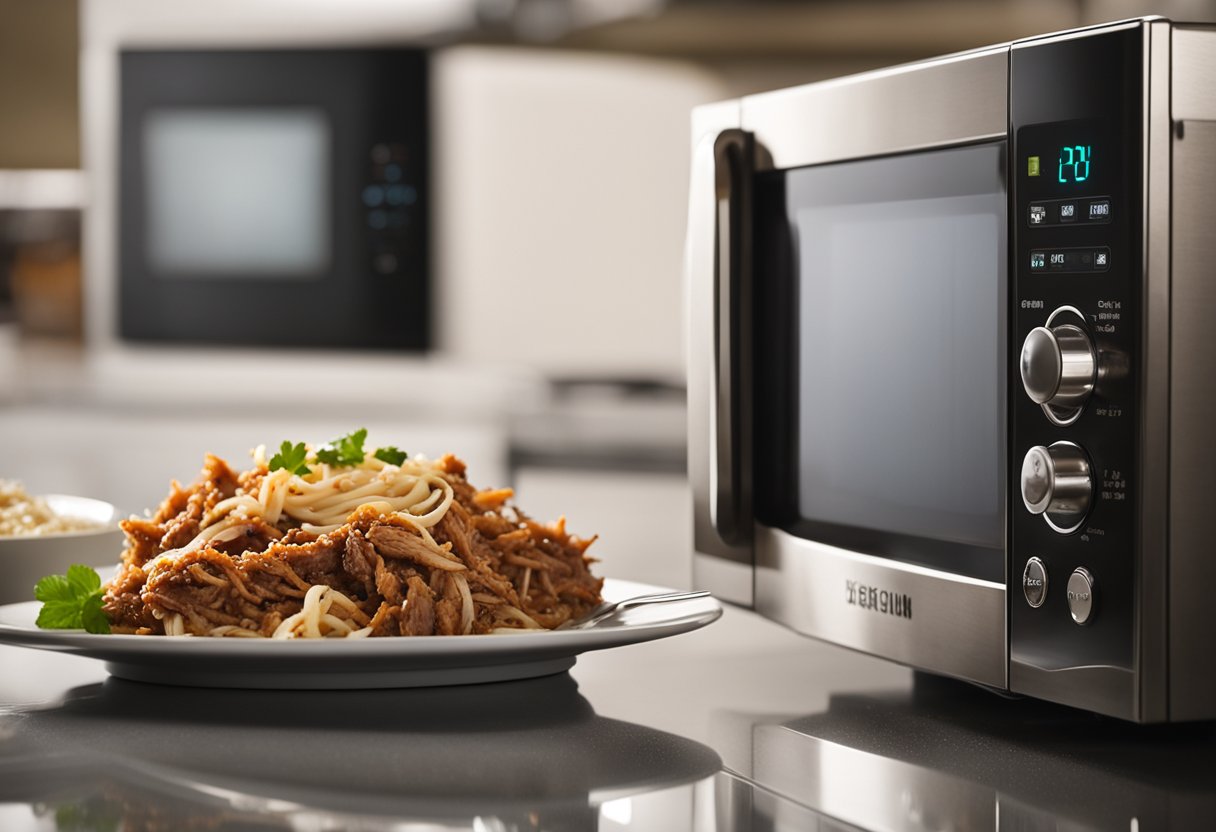
What is the best way to reheat pulled pork in a slow cooker?
If you want to reheat pulled pork in a slow cooker, make sure to add some liquid like apple juice or broth to prevent it from drying out.
Set the slow cooker to low heat and let the pork reheat for 2-3 hours. Stir occasionally to ensure even heating.
Can I reheat pulled pork on the stove without losing its moisture?
Yes, you can reheat pulled pork on the stove without losing its moisture. Add a bit of liquid like apple juice or broth to the pork and cover it with a lid. Heat the pork over low heat, stirring occasionally to prevent sticking.
How do I use an air fryer to reheat pulled pork effectively?
To reheat pulled pork using an air fryer, preheat the air fryer to 350°F. Add the pulled pork to the air fryer basket, and cook for 5-7 minutes, stirring occasionally. This method will help to crisp up the pork and retain its moisture.
What are the steps for reheating pulled pork using a sous vide method?
To reheat pulled pork using a sous vide method, first, vacuum seal the pork in a bag. Preheat the sous vide machine to the desired temperature, usually around 165°F.
Place the sealed bag in the sous vide machine and let it cook for 1-2 hours, depending on the amount of pork. Once done, remove the bag and serve.
Is it safe to reheat pulled pork in an electric roaster, and how?
Yes, it is safe to reheat pulled pork in an electric roaster. Add some liquid to the pork and cover it with a lid. Set the roaster to 250°F and let the pork reheat for 30-45 minutes, stirring occasionally.
What precautions should be taken when reheating pulled pork to prevent it from drying out?
To prevent pulled pork from drying out, make sure to add some liquid like apple juice or broth when reheating.
Cover the pork with a lid to trap in the moisture, and stir occasionally to ensure even heating. Avoid overheating the pork, as this can cause it to dry out.
